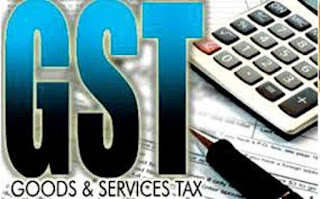One
Nation One Tax: GST, India
By: Kartikeya Semwal
Till date, India had
different types of taxes for different things; and people had to pay them in
order to purchase and use various products and services across India. Some of
those taxes include Service tax, Excise Duty, VAT (Value Added Tax), Customs
Duty, STT (Securities Transaction Tax), Stamp Duty, House tax, Water tax,
Entertainment tax, etc. But now all these taxes will be gone and will be
replaced by one single tax called ‘GST’ (Goods & Services Tax). The GST has
been implemented in India from 1 July 2017 onwards, through the 101st
Constitutional Amendment Act 2017. The GST will be governed by the GST Council with India’s Finance Minister Arun Jaitley as its chairman. The GST will be divided under various categories of goods and services; and its rates will be in 5 slabs of 0%, 5%, 12%, 18% and 28% accordingly. There will be a special rate of 3% on gold and gold jewellery.
There will be 3 kinds of GST:-
1. CGST:
Where the revenue will be collected by the Central Government.
2. SGST:
Where the revenue will be collected by the State Government.
3. IGST:
Where the revenue will be collected by the Central Government for inter-state
sales and transfer of goods and services.
The GST will benefit India in many ways, some of
which are:-
(i). It will help the country’s business gain a
level-playing field.
(ii). It will put India at par with other foreign
nations who have a more structured tax system.
(iii). It will increase India foreign trade with other
countries as many products and services weren’t being traded due to different
types of taxes and their complex system, by other countries. Now those goods
and services will be traded as well.
(iv). From now on, all gods and services will have a
single tax which will relieve people from paying different types of taxes for
buying and using different goods and services.
(v). This single tax system will result in providing
advantage to the end-customer, who won’t have to pay forwarded tax by traders
and shopkeepers.
(vi). Many products
and services will become cheaper, specially electronic goods and vehicles. 




Comments
Post a Comment